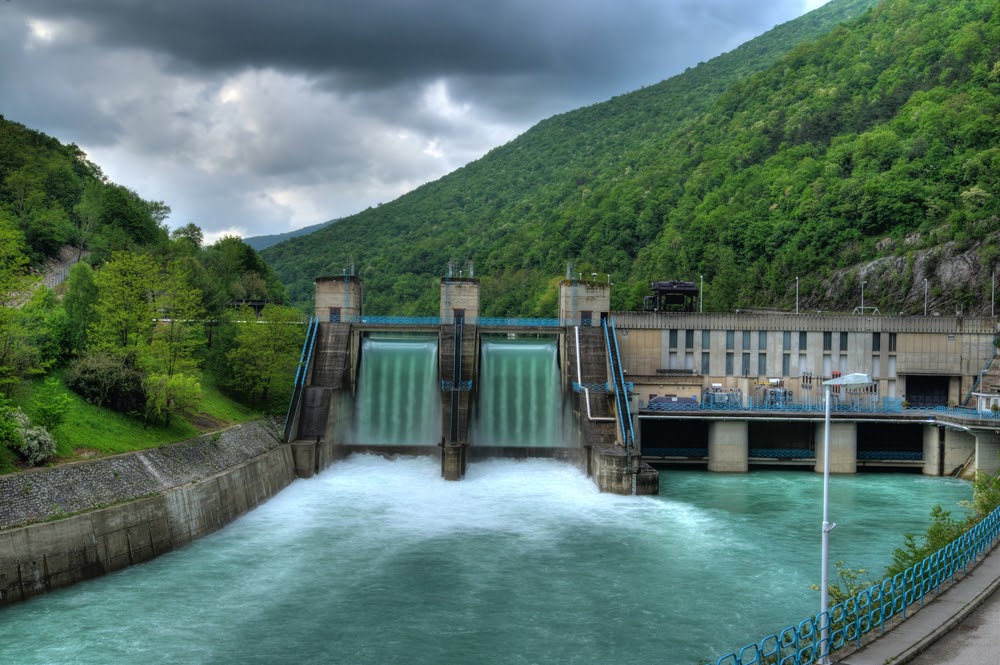Can You Create Homemade Water Power?
Renewable energy, also known as clean energy or green energy, relies on sources that are naturally replenished instead of finite sources such as coal and oil. Because renewable energy sources don’t produce greenhouse gases, they are much safer for the environment.
One of the most common types of renewable energy is hydroelectric power, which converts the kinetic energy of water into electricity. If you want to lower your monthly utility bills and reduce your carbon footprint, you may want to consider creating homemade water power. Here’s what you should know:
How Do You Make Electricity Out of Water?
Converting water into electricity might sound complex, but the process is actually quite simple. To create hydroelectric power, a dam must be built on a large river, preferably one that has a significant drop in elevation.
The river water is stored behind the dam in what is called a reservoir. Gravity pulls at the water from the reservoir, causing it to fall through a floodgate that is built into the dam. At the end of the floodgate, there is a turbine propeller.
As the water falls, it pushes onto this turbine propeller, causing it to turn. A metal shaft inside a generator will begin to turn as a result of the turbine propeller’s movement. This generator produces electricity, which is transferred to nearby businesses and homes via power lines.

Factors to Consider When Planning An At-Home Microhydropower System
There are only 2,400 hydroelectric plants in the United States, so many people don’t have access to water power. But if you have flowing water on your property, you may be able to build your own microhydropower system.
There are a number of factors you need to consider before installing a microhydropower system on your property, including:
- Power Output
- Economics
- Water Rights and Permits
Power Output
The first factor you should consider is the potential power you will be able to produce by building a microhydropower system on your property. If you don’t have adequate water flow, you might not be able to produce enough electricity to power your home.
To calculate your potential power output, you will need to determine the head and flow of the water on your property. The head is the vertical distance that the water on your property falls and the flow is the amount of water that falls.
Don’t attempt to take these measurements on your own. It’s best to contact a professional to survey your property to determine the head. You can obtain flow information from your city or county.
Then, multiple the head by the flow. Divide this number by 10 to determine the system’s power output in watts.
Economics
Now that you know the potential power output, you can determine if it’s worth building a micro hydropower system on your property.
Calculate how much it will cost to build the micro hydropower system and maintain it over the course of its expected life. Then, divide this number by the estimated power output. This will give you a rough idea of how much this project will cost in dollars per watt.
Compare this number to the cost of electricity provided by your local utility company. If building, operating, and maintaining a micro hydropower system will cost more than using the utility-provided electricity, it’s probably best to explore other renewable energy options. After all, one of the benefits of using renewable energy is that it is typically less expensive than utility-provided electricity.
Water Rights and Permits
Finally, it’s important to consider water rights and permits before starting construction on a microhydropower system on your property.
Permit requirements are different in every city or county, so contact your local government to find out what the rules are in your area. Be prepared to fill out the appropriate paperwork and pay fees in order to obtain the proper permits.
Each state has its own water rights, which could affect your ability to legally build a micro hydropower system on your property. Contact your state’s energy office to learn more about the water rights that apply to you.
If you are approved to build a micro hydropower system, you may need to comply with certain terms that limit how much water you are allowed to divert from the water source on your property.
At this point, you have the information you need to determine whether or not you should build a microhydropower system on your property. If this isn’t an option, consider using other renewable energy sources such as solar or wind power. This way, you can still enjoy the benefits of lowering your utility bills and living a greener life!


